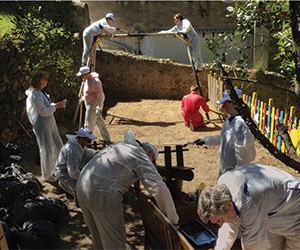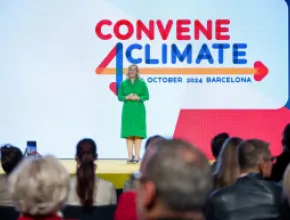Four years in the waiting, the APEX/ASTM Environmentally Sustainable Event Standards are one giant leap closer to reality.
The Convention Industry Council (CIC) in June announced that eight of the nine draft standards have completed review by the ASTM committee, where they have been under development, clearing them for final approval and ratification as official ASTM standards.
The suite of standards, comprised of nine individual "sector" standards, covers all facets of event planning and management: accommodations, audiovisual, communication and marketing, destinations, exhibits, food and beverage, meeting venue, on-site office and transportation.
The ninth and final standard, accommodations, is undergoing final revisions, and at press time had an estimated completion date of late summer.
"We've gone through the consensus process for eight of the nine standards, so eight are done, and there are not going to be any changes to those documents," says Sue Tinnish, APEX/ASTM standards liaison for the CIC. "Those eight have to go through a review process by the committee on standards and an editorial process and we're done."
According to Tinnish, one remaining section within the accommodations area—greenhouse gasses—is still undergoing revision.
"We're rewriting the standard because of changes in industry," she says. "Hotels are now tracking greenhouse gases because of new tools available."
"We know that the standards are highly anticipated in the industry, and that suppliers and planners are eager to get their hands on the standards to get an understanding of the process and analysis that they will need to go through," says Lawrence Leonard, APEX director at the CIC. "There is a prevailing sense among volunteers and leadership to go ahead and move eight of nine toward publication. The ninth will only lag behind the rest by two to three months, though that could change."
While many major hotel chains and other suppliers are implementing their own green efforts, the standards will provide a clear way to measure sustainability, with level ratings of one through four.
"The intention of the standards is to create a way in which people can have the same conversation about whether their meeting is sustainable or not," says Amy Spatrisano, principal of Portland, Ore.-based MeetGreen. "The standards will provide a roadmap for planners, especially those just beginning this process.
"To perform at level one requires a certain set of criteria," she continues. "They can just plug in the criteria rather than setting their own criteria. This will really bring it together, even if they don't follow the standards per se, but there will be a form of benchmarking."
According to Leonard, the CIC is looking at implementing certification focused on event sustainability for meeting professionals that would be along the same lines as CMP certification, with an application process and an examination. A recent revision to the CMP body of knowledge included areas on sustainability, but the CIC is considering making sustainable events a sub-specialty.
The Green Meeting Industry Council (GMIC) initiated train-to-trainer courses on the APEX standards to prepare for the standards when they are published.
"We've started to prepare what we know will be in the standards and are implementing train-to-trainer courses about what will be in curriculum," says Paul Salinger, president of GMIC. "It's important to have an education plan around sustainable meetings and all the standards. Ultimately, the certification will happen through CIC."
According to Salinger, the jury is still out on how many people in the industry will want to be certified as green meeting planners.
"People are already doing a lot of the processes involved in green or sustainable meetings," he says. "A lot of this will be to formalize this process. There is still a lot of education that needs to happen and still a lot [of people] have not bought into why a sustainable process is the way to run an effective meeting. Still, sustainability as a trend is trending upwards."
Flexibility needed
According to Tinnish, there is interest in creating offshoots or tools to accompany the standards to help people use them.
"This has a lot of sections that I anticipate nobody will ever look at," she says. "There is some plan to create guidance documentation to help people use the standards."
Leonard says the CIC will likely offer help in that respect.
"With four levels of supplier and planner responsibilities, the standards can be hard to digest," he says. "We're looking into offering summary grids that will let people working with the standards look at level requirements side by side."
Despite the years of revisions and compromises in publishing the standards, Tinnish says the ASTM committee is pleased with the final product.
"That's not to say that we're not open for feedback," she says. "In fact, environmental sustainability is such a challenging field and requires cooperation among all stakeholder groups that we feel the standards will benefit from use.
"We realize planners and suppliers created them, but we also realize nobody has ever done this before," she continues. "We need the actual use of the standards to find out their weaknesses. It's critical that they be used and we know we'll find things that need changing."
Leonard concurs that the standards will need to be flexible as the industry changes.
"Hopefully our sustainability as an industry and as a world will continue to advance and five years from now the standards will be different," he says. "These will be living, breathing standards. When to start working on the next version is already in discussion."







